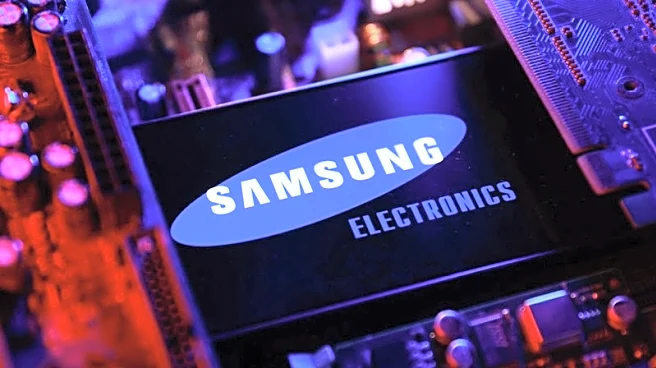What's Happening?
The U.S. government is contemplating a plan to allow South Korean companies Samsung Electronics and SK Hynix to import American-made chipmaking equipment into their Chinese plants under a limited approval framework. This proposal involves issuing annual permits, replacing the indefinite authorizations previously granted. The move comes after the Trump administration removed these companies' Chinese facilities from the Validated End User list, raising concerns about supply disruptions. Samsung and SK Hynix heavily rely on their Chinese facilities, which produce a significant portion of their NAND and DRAM chips. However, these factories focus on general-purpose chips rather than advanced products like high-bandwidth memory used in AI.
Why It's Important?
The proposal to issue conditional approvals is significant as it aims to balance the need for maintaining production capabilities in China with the U.S.'s strategic interests in limiting technological advancements in Chinese facilities. This decision could impact the global semiconductor supply chain, particularly for companies relying on Samsung and SK Hynix's output. While the plan may reduce immediate disruptions, critics argue that the long-term impact might be limited due to ongoing U.S. bans on technological upgrades at these facilities. The outcome of these discussions could influence future trade relations between the U.S. and South Korea, as well as the semiconductor industry's dynamics.
What's Next?
Talks between Washington and Seoul are ongoing, with no final decision yet. If approved, Samsung and SK Hynix would need to apply annually for specific quantities of restricted tools, introducing more bureaucracy into their operations. The U.S. Bureau of Industry and Security has stated it does not intend to grant licenses for capacity expansion or technology upgrades at Chinese fabs. The decision regarding Taiwan Semiconductor Manufacturing Company's license revocation is set to take effect on December 31, which could further complicate the semiconductor landscape.













